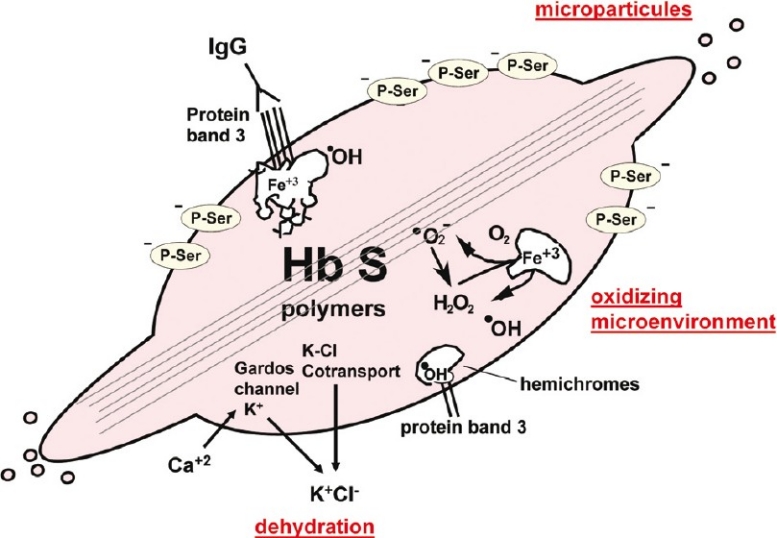Fig. 2.

Membrane alterations in the sickle red blood cell. Formation of the deoxy-HbS polymer fibres triggers a whole series of changes of the red blood cell membrane. Ion channels are affected and their dysfunction is responsible for a cellular dehydration which, in a vicious circle, favours deoxy-HbS polymerization. Hemichromes are released and lead, in particular, to the formation of protein band 3 aggregates on which anti-band 3 IgGs accumulate. The liberation of heme and Fe3+ favours an oxidizing microenvironment. Exposure of anionic phosphatidylserines at the external side of the membrane creates a procoagulant surface. Finally, microparticles are released. [Source: Modified and completed from Elion and Labie33].
